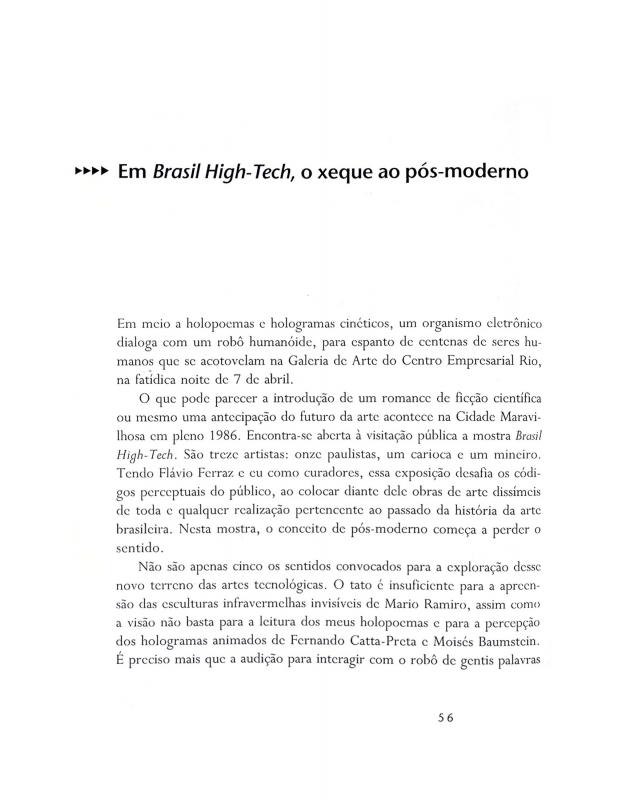Using Rio de Janeiro as his base, artist Eduardo Kac (b. 1962) undoubtedly has as broad an international scope as any Brazilian artist working in the field of electronic art. Born when he was, Kac involuntarily began his art life in the midst of what was known as “Geração 80,” a group that reassumed a form as obsolete (at the time) as painting. He was a pioneer in investigations involving several technological art trends, in addition to leading the way in transgenic art and what was known as “telepresence” (introduced at Ornitorrinco, 1989). Starting in 1995, he began to publish articles that documented this history in the journal Leonardo. Kac moved to the United States in 1989 and is currently a professor in the field of art technology at the Art Institute of Chicago. For the exhibition Ars Electronica (Linz, Austria, 1999), he came up with an “artist’s gene,” a creation that translated a verse of the Old Testament into Morse code, and from there, turned it into DNA.
For further examples of his contribution in this field, see the essays “Eduardo Kac: telepresença problematiza a visão” [doc. no. 1111128]; “Em Brasil High Tech, o xeque ao pós-moderno” [doc. no. 1111320]; the controversial “GFP Bunny” [doc. no. 782231]; “Microponto, microficha, videodisco: a arte high-tech em espaço microscópico” [doc. no. 1110966]; and “Origem e desenvolvimento da arte robótica” [doc. no. 1111127].
In 1982, Maria Lúcia Santaella, the researcher and professor of semiology at Pontificie Universidade Católica de São Paulo (PUC-SP), performed an in-depth study that is a pioneering work on the subject in her essay “As especulações holográficas de Wagner [Garcia] (no cruzamento da criação e da aventura)” [doc. no. 1111027].






